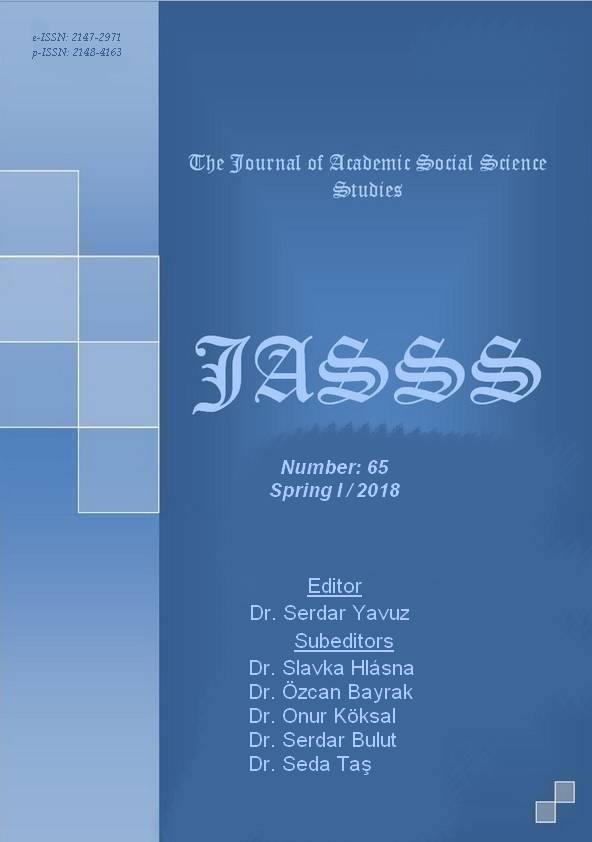SÖZLERİ ŞEYH GÂLİB’E, BESTELERİ HACI ÂRİF BEY VE SADEDDİN KAYNAK’A AİT OLAN ŞARKI FORMUNDA İKİ ESERİN KARŞILAŞTIRMALI MÜZİKAL ANALİZİ
Author :
Abstract
Cumhuriyet dönemi öncesi ve sonrası olmak üzere Klasik Türk Mûsikîsi Din dışı Formlarından en yaygın şekilde kullanılmış olan Şarkı formunda bestelenmiş, sözleri aynı ancak bestekârları farklı kişilere ait ve aynı zamanda makamları da farklı iki eserin müzikal özelliklerinin analiz edildiği bu çalışmada, öncelikle Şeyh Gâlib Dede, Hacı Arif Bey ve Saadettin Kaynak’ın Hayatı ve eserlerine değinilerek Türk Mûsikîsinde Formlar, Usûller, Arûz vezni ve Klasik Türk mûsikîsiyle ilişkisi hakkında genelden özele doğru olacak şekilde bilgiler verilmiştir. Söz konusu çalışmada, sözleri Şeyh Gâlib Dedeye, bestesi Hacı Arif Bey’e ait Kürdî’li Hicazkâr makamında “Geçti zahm-i tir’i hicrin” adlı eserle beraber yine sözleri Şeyh Galip’e ait, bestesi ise Sadettin Kaynak’a ait olan Isfahan makamında “Fariğ olmam eylesen yüz bin cefa” adlı eserler örneklem durumundadır. Çalışmada, söz konusu eserlerin güfte, form, makam ve usul analizleri yapılarak ne gibi benzerlikleri ve farklılıkları olduğu ele alınmıştır. Elde edilen bulgular neticesinde Şeyh Gâlib Dede’nin adı geçen şiirlerinin aynı vezinle yazılmış ve aynı form yapısına sahip olduğu görülmektedir. Hacı Arif Bey, Klasik geleneği sürdüren ve aynı zamanda şarkı formunun mucidi sayılan Cumhuriyet dönemi öncesi 18. yüzyıl bestekârımızdır. Hafız Sadettin Kaynak ise Cumhuriyet dönemi bestekârlarından ve aynı Klasik geleneği koruyan bestekârlar arasında gösterilmektedir. İncelediğimiz eserlerde iki bestekârımızda usûl değişikliğine giderek Şarkı Formunun klâsik geleneğe ait formatını kullanarak kolaya kaçmayarak Klasik geleneğe bağlılıklarını görmekteyiz. Tüm bu sonuçlar akabinde çalışmamızın, hem Klâsik tavır hem de sanatsal eserlerin devamı açısından bizlere ışık tutacağı ve yeni eserler oluşmasına katkı sağlayacağı düşünülmektedir.
Keywords
Abstract
In this study; musical qualities of two different works of different composers with the same lyrics but different makams(tunes), that were composed in Song form the most commonly used form of non-religious Classical Turkish Music including the period before and after the Republic are analyzed and mentioning the life and the works of Şeyh Gâlib Dede, Hacı Arif Bey and Saadettin Kaynak primarily, their relation with Form, Usûl, Arûz wezni in Turkish Music and Classical Turkish Music is covered from general to specific. The work named “Geçti zahm-i tir’i hicrin”, written by Şeyh Gâlib Dede and composed by Hacı Arif Bey in Kürdî’li Hicazkâr makam(tune), and the work named “Fariğ olmam eylesen yüz bin cefa”, written by Şeyh Galip and composed by Sadettin Kaynak in Isfahan makam(tune), are the samples of this study. In this study; the works have been analyzed in terms of lyrics, form, makam(tune) and usul(tempo), and their similarities and differences are discussed. As a result of the findings, it is seen that the mentioned poems of Şeyh Gâlib Dede were written in the same vezin(meter) and they are in the same form. Hacı Arif Bey is one of our 18th century composers who sustain Classical tradition and considered to be the inventor of Şarkı form. Hafız Saadettin Kaynak is one of our Republic era composers and he is seen as one of the composers who sustain the same Classical tradition. In the works we examine, we see that both of the composers comply with the Classical tradition by changing usûl(tempo), using the classical traditional format of Şarkı form and not taking the easy way. Considering all the results, our study is thought to offer an insight to both the Classical manner and the continuation of artistic works and will contribute to the creation of new works.





